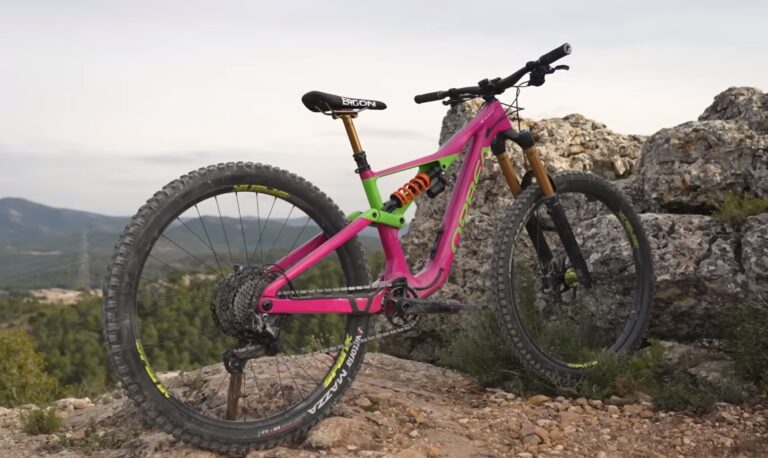Mountain bike gears are an essential part of any mountain biking setup. They allow you to adjust your speed, control the resistance you feel as you pedal, and make it easier to climb steep hills and navigate challenging terrain.
Mountain biking is a great way to get outdoors and explore nature. But in order to enjoy it, you need to have the right gear.
This includes a bike that is tailored to the terrain you will be riding, and having the right gears on your mountain bike.
What Is Meant By Mountain Bike Gears?
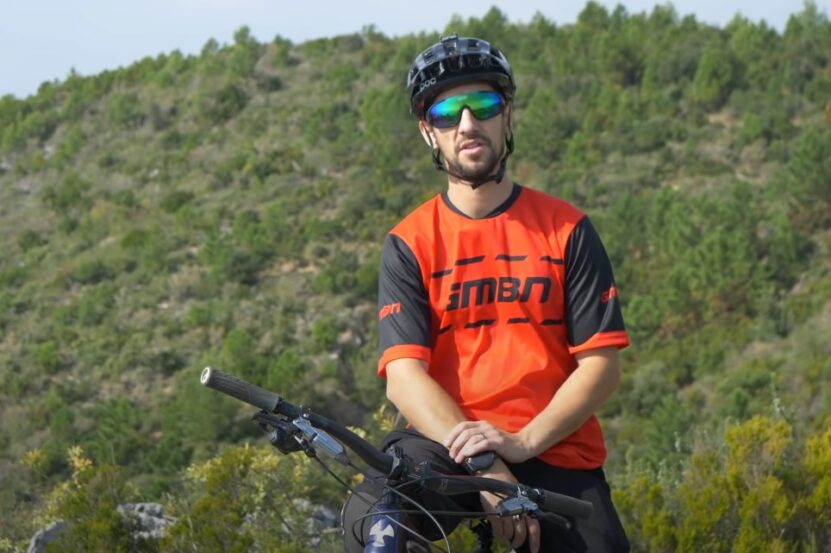
Mountain bike gears are the various speeds at which a mountain bike can travel. The number of gears on a mountain bike can vary, but most have between 21 and 27 gears. The gears are controlled by shifters, which are located on the handlebars.
There are many different types of mountain bike gear systems available. The most common system is a 3×9-gear set, which features three chainrings at the crankset and nine gears in the rear cassette. This type of system is generally used for cross-country riding, as it offers a good balance between power and speed.
If you are looking for more versatility with your mountain bike, then you may want to consider using a 3×7, 3×8, 2×10, or 1×11 gearing system. These setups offer more gears in the rear cassette, giving you more options when it comes to climbing and descending hills.
Type Of Gears On MTB
Gears on a mountain bike are essential for making it up and downhills. They allow you to control your speed and save energy. But with so many different types of mountain bikes on the market, what kind of gear should you look for?
There are three main types of mountain bike gears: Shimano, SRAM, and Campagnolo. Each type has its own strengths and weaknesses, so it’s important to choose the right one for your needs.
Shimano is the most popular type of mountain bike gear. It’s known for being durable, easy to use, and affordable. SRAM is the lightest weight option and is often used by professional riders. Campagnolo is the most expensive option but is also the most reliable.
When choosing gears for your mountain bike, it’s important to consider your riding style and the type of terrain you’ll be riding on. If you’re a beginner, it’s a good idea to start with Shimano gears.
If you’re an experienced rider, you may want to upgrade to SRAM or Campagnolo. And if you’re planning on riding in very hilly terrain, it’s a good idea to get a bike with multiple gears.
Mountain Bike Gear Ratios?
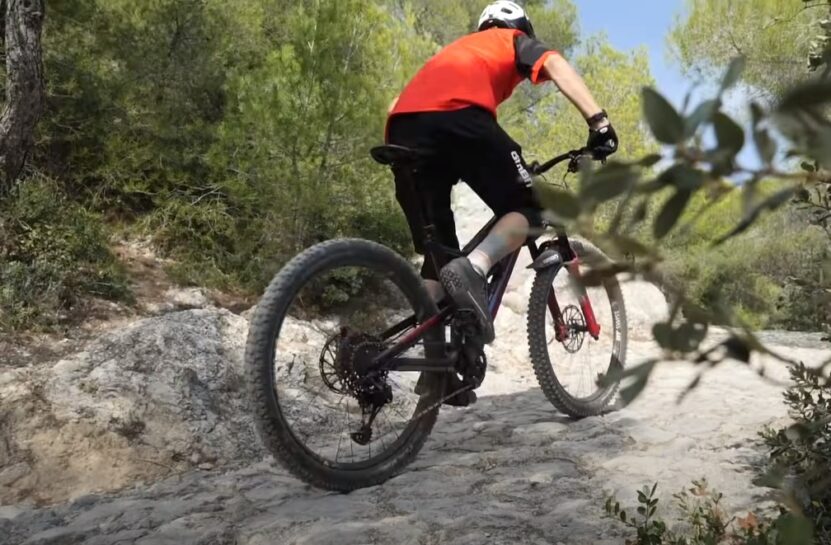
The gear ratio is the number of teeth on the front sprocket divided by the number of teeth on the rear sprocket. This ratio determines how many rotations of the pedals are required to turn the rear wheel once.
A higher gear ratio means that more pedal rotations are required to turn the rear wheel once, but the bike will go faster for a given speed of pedaling. A lower gear ratio means that fewer pedal rotations are required to turn the rear wheel once, but the bike will go slower for a given speed of pedaling.
Most mountain bikes have two front sprockets and between seven and nine rear sprockets. These different combinations of gears allow riders to easily change gears according to conditions and their own strength level.
For example, small front and large rear sprockets provide a low gear that is ideal for ascending steep hills or riding on loose dirt. Conversely, using a large front and small rear sprocket provides a high gear that is ideal for traveling at faster speeds on flat roads or descents.
The most important thing to understand about gear ratios is that they are exponential. This means that a small change in the number of teeth on either the chainring or the cassette cog can result in a big change in the gear ratio.
For example, if you have a 20-tooth chainring and a 40-tooth cog, the gear ratio is 2:1. If you change the chainring to a 21-tooth, the gear ratio becomes 2.1:1. This may not seem like much of a difference, but it actually results in the bike being easier to pedal by 7%.
When choosing a mountain bike, it’s important to consider the type of terrain you’ll be riding on. If you’re mostly riding on a flat or rolling terrain, you’ll probably want a bike with a lower gear ratio so that you can go faster.
But if you’re planning on doing a lot of climbing, you’ll want a bike with a higher gear ratio to make it easier to get up hills.
Many bikes come with a range of gear ratios available through the use of different chainrings and/or cassette cogs. Some mountain bike cassettes, for example, include an 11-tooth cog that allows you to have a very low gear ratio when combined with a 32-tooth chainring.
However, this low gear ratio may make pedaling too hard on flat terrain. To get around this, some riders add a smaller chainring to the bike in order to raise the overall gear ratio and make pedaling easier on flats.
Gears help us to be more efficient when riding by allowing us to pedal at a constant speed regardless of the terrain.
This is especially important when mountain biking because the terrain can vary so much, from smooth fire roads to technical singletrack. By using gears, we can maintain a constant pedaling speed and avoid having to push too hard or ride too slowly when going up or downhill.
What Is Low Gear On A Bike?
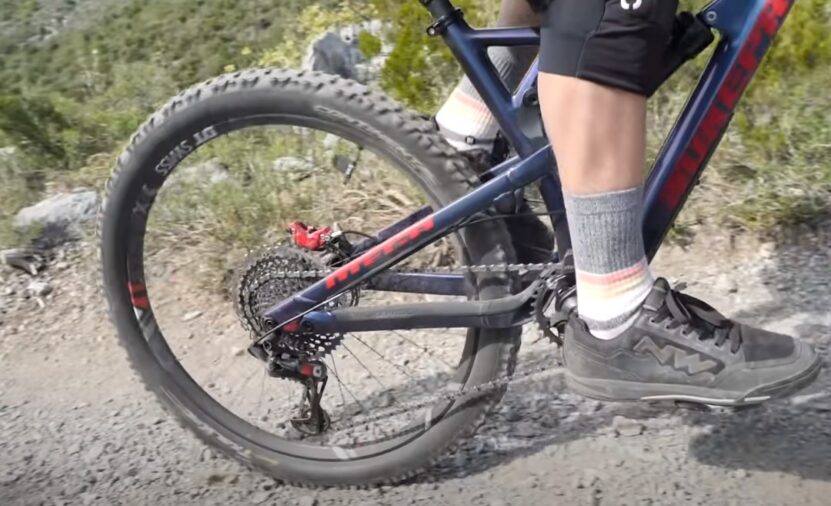
Low gear on a bike is a gear that has fewer teeth on the chainring, or front sprocket, and more teeth on the cassette cog, or the rear sprocket. This provides less resistance and more speed while pedaling. Low gears are ideal for uphill riding, as they allow you to maintain your speed without having to pedal as quickly.
Low gears are not only for hills, however. They can also be used on flat terrain to make pedaling easier, especially if you are new to cycling or have just started getting back into shape.
Additionally, low gears can be helpful if you are carrying a lot of weight on your bike, as they will allow you to maintain your speed without having to work as hard.
Whether you are a beginner cyclist or an experienced rider, it is always smart to know how to use your bike’s gears effectively. Choosing the right gear for any situation can make your ride more enjoyable and allow you to get the most out of your bike.
So next time you hop on your bike, remember to use low gear for uphill riding and any other situation that requires less resistance and more speed. With practice, you will be able to master your gears and get the most out of every ride.
What Is High Gear On A Bike?
A high gear on a bike is the highest ratio of gears that you can pedal. It is typically used for riding downhill or when you need more speed. In order to shift into high gear, you need to pedal faster. This is typically done using a derailleur and shifter on your grip or handlebars.
Some bikes have a single gear for both low and high gears, while others have multiple gears that are used for shifting up or down depending on which direction you want to go.
High gears are typically used when you want to go fast, while low gears are used when you want to climb hills or ride on flat terrain.
You can also use a high gear to pedal downhill, but you’ll need to be careful not to overdo it and spin out. If you do, just remember to pedal slowly and evenly until you come to a stop.
High gears can also be useful for coasting. If you’re pedaling along and come to a stop, you can shift into high gear and coast until you need to start pedaling again. Just remember to pedal slowly and evenly when you start up again so you don’t overdo it and spin out.
Best Gear Ratio For Mountain Bike
To choose the best gear ratio for your mountain bike, it’s important to consider the terrain you’ll be riding on and your own personal preferences.
A good starting point is to select a gear ratio that will allow you to pedal up steep hills comfortably while still being able to cruise on flat or moderate terrain.
If you’re mostly going to be riding on relatively flat terrain, you may want to consider a higher gear ratio so you can take advantage of your bike’s speed potential.
Conversely, if you’ll be tackling a lot of hills, a lower gear ratio will help make climbing easier.
Ultimately, only through experimentation and practice will you be able to determine the best gear ratio for you and your mountain bike.
How Do Mountain Bike Gears Work?
Mountain bike gears work by providing different levels of resistance to pedaling. The most common type of mountain bike has 21 gears, with each gear providing a different level of resistance. The first gear is the easiest to pedal, while the 21st gear is the hardest.
To change gears, you use the shifters on your handlebars. Each shifter controls a set of gears at the front and rear of your bike, allowing you to quickly shift between gears without having to stop pedaling. The derailleur is what actually moves the chain from one gear in the front or back to another.
Changing gears on a mountain bike allows you to put more energy into the pedal stroke and power over difficult terrain. However, it’s important to know when to shift gears, as well as how to do it properly, in order to avoid damaging your bike or hurting yourself.
How To Use Mountain Bike Gears
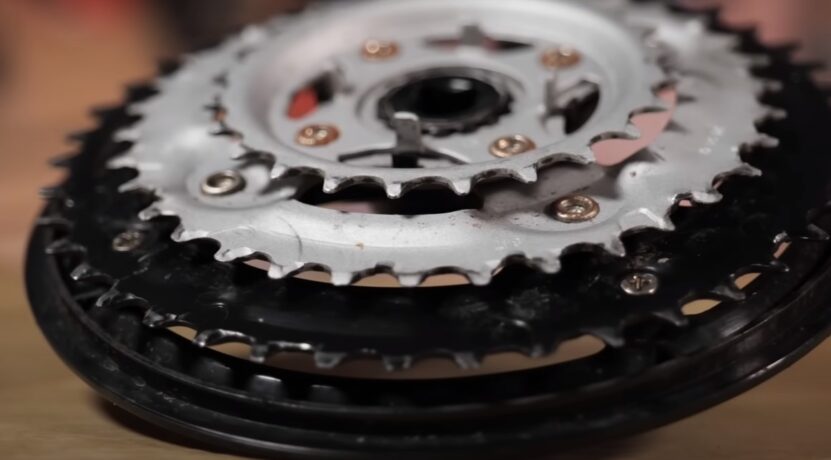
Mountain bike gears are a very useful tool for keeping your ride smooth and comfortable. With the help of different gear ratios, you can change how hard or easy it is for you to pedal your way through varying terrain.
Knowing how to use mountain bike gears correctly will help you get more out of every ride, whether you’re climbing steep hills or flying down a valley.
To begin using your gears, you’ll need to first understand some basic terminology about gearing. A bike’s gear ratio is the spacing between the crank arms – or in other words, how far apart they are from each other when the pedals are at their furthest point of rotation.
Typically, road bikes have small gear ratios, while mountain bikes have large ones. This helps make it easier to pedal when climbing hills but harder when going downhill.
To change your gears, you’ll need to shift the front derailleur (the mechanism at the front of your bike that controls which chainring you’re using), and maybe also move the rear derailleur (which moves the chain between gears on the cassette). You can do this by using your bike’s shifters, which are usually located on the handlebars.
When changing gears, it’s important to remember a few things.
First, you’ll want to shift slowly and smoothly, especially when going up or downhills. Sudden shifts can cause the chain to come off, which can be dangerous.
Second, you’ll want to make sure that you’re in the correct gear for the terrain – if you’re pedaling too hard in a low gear, you’ll likely just end up going slower. Conversely, if you’re in too high of a gear on a steep hill, you might not be able to pedal at all.
Finally, it’s important to listen to your bike – if it starts making strange noises, that’s usually a sign that something is wrong. If you’re unsure about anything, don’t hesitate to ask a knowledgeable friend or bring your bike into a shop for a tune-up.
By following these simple tips, you’ll be sure to make the most out of your mountain bike gears and have a great time out on the trails.
How To Shift Gears On Mountain Bike?
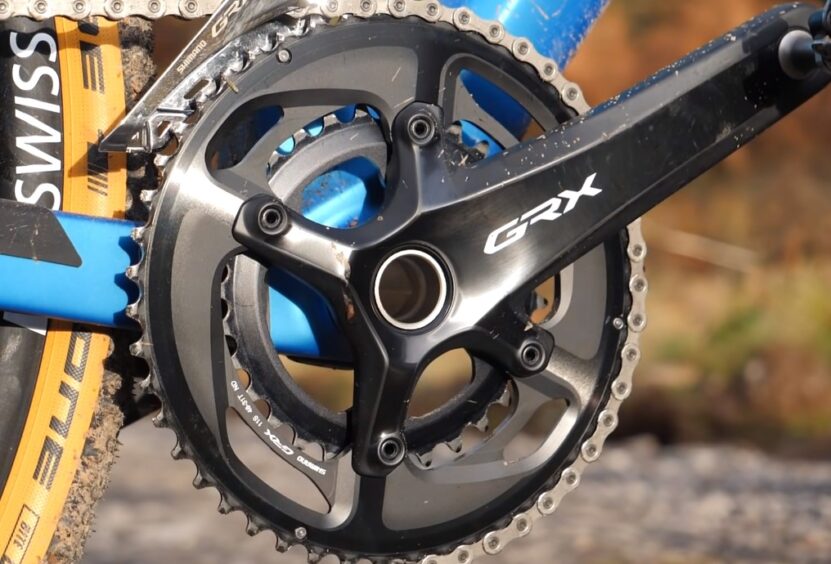
There are a few things you should keep in mind when shifting gears on your mountain bike.
First, make sure that your chain is properly aligned before shifting. This means that the chain should be in line with the teeth on the gear you’re trying to engage. If the chain is misaligned, it can slip off of the gear, which can damage your bike or cause you to crash.
Second, always pedaled when shifting gears. Shifting gears without pedaling can also cause the chain to slip, as well as damage the gears themselves.
Finally, make sure to use both shifters when shifting gears. This helps to keep the chain from getting jammed in between the gears, which can also cause damage.
If you follow these simple tips, you’ll be able to shift gears on your mountain bike without any problems. Of course, practice is also important, so be sure to get out on your bike and try shifting gears regularly.
Doing so will help you become more comfortable with changing gears and will allow you to ride faster and smoother over difficult terrain.
How To Choose Mountain Bike Gears?
There are a few things to keep in mind when choosing mountain bike gear.
First, you need to think about what kind of terrain you’ll be riding on. If you’re planning to ride on relatively flat trails, then you can get by with fewer gears than if you’re going to be riding up and down hills or over technical terrain.
Next, think about the kind of bike that you have. Mountain bikes come in different styles, such as enduro mountain bikes, cross country mountain bikes, and all-mountain mountain bikes.
Each of these has a different gearing system. For example, enduro mountain bikes tend to have more gears than cross-country or all-mountain models.
Finally, think about how often you’ll be riding your bike. If you’re only planning to ride occasionally and for short distances, then you may not need as many gears.
On the other hand, if you’re planning to ride for hours on end or go on long cross-country rides, then having a wider gear range will be more important.
So when choosing the right mountain bike gear, consider the kind of riding that you’ll be doing, how often you’ll be riding, and the type of bike that you have. With these factors in mind, you’ll be able to choose the right mountain bike gear for your needs.
Mountain Bike Gears Groupset
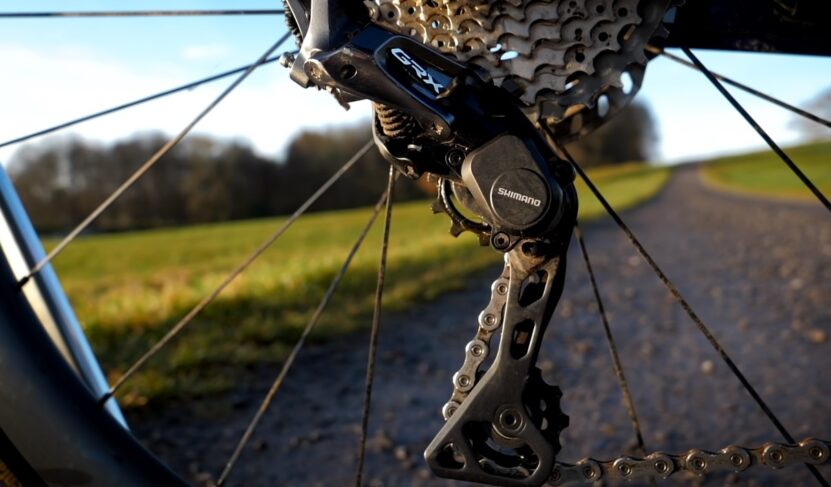
Depending on the level of quality and features desired, mountain bike groupsets will typically include some or all of the following components:
1. Derailleurs
2. Shifters
3. Brakes
4. Crankset
5. Chain
6. Cassette/freewheel
7. Pedals
Derailleurs – used to change gears, mountain bike derailleurs are typically long-cage designs that can accommodate a wide range of gearing options.
Shifters – integrated with brake levers on most mountain bikes, shifters are used to change gears. Mountain bike shifters come in both trigger and grip shift designs.
Brakes – there are two main types of mountain bike brakes – rim brakes and disc brakes. Disc brakes offer more power and better modulation, while rim brakes are typically lighter weight and easier to maintain.
Crankset – the crankset consists of a crankarm (which connects to the pedals), chainrings, and a bottom bracket. Mountain bike cranksets come in a wide range of gearing options, from single-speed to multi-speed.
Chain – the chain is what transfers power from the crankset to the rear wheel. Mountain bike chains come in a variety of widths to accommodate different gear ratios.
Cassette/freewheel – the cassette or freewheel is what attaches to the rear wheel and contains the cogs that make up the gears. Mountain bike cassettes come in a variety of sizes and speeds.
Pedals – pedals attach to the crankarms and are used to power the bike. Mountain bike pedals are typically a clipless design that offers more control and power transfer. Some mountain bikes also come with platform-style flat pedals, which provide greater traction and stability.
Mountain Bike Gear Ratio Chart
There are a lot of different mountain bike gearing options out there, so it can be hard to know which one is right for you. That’s why we’ve put together this handy chart to help you pick the perfect gear ratio for your riding style.
If you’re mostly riding on a flat or rolling terrain, you’ll probably want a gear ratio that’s lower than average. This will give you more power for pedaling up hills and make it easier to maintain a high speed on the flats.
If you’re mostly riding on hilly terrain, you’ll want a gear ratio that’s higher than average. This will help you keep your legs from getting too tired on long climbs and make it easier to maintain your speed on downhill sections.
Of course, there’s no hard and fast rule for choosing the right gear ratio. Ultimately, it comes down to personal preference and what feels comfortable for you. So, experiment with different ratios until you find one that suits your riding style and terrain.
Conclusion
No matter what type of mountain bike gears you choose, make sure that they are compatible with your bike’s drivetrain. This will ensure that your chain stays properly seated on the chainrings and cogs and that your shifting is smooth and precise.

